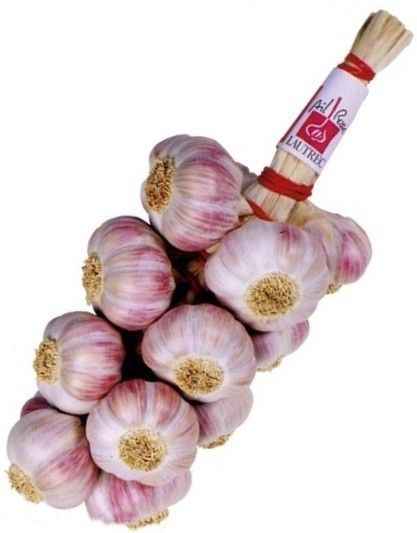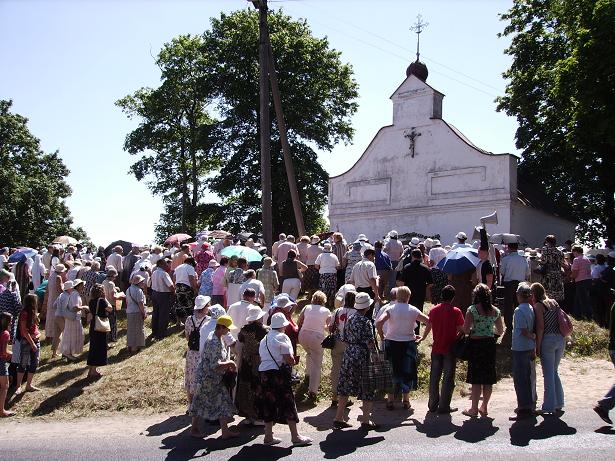|
Lautrec
Lautrec (; oc, Lautrèc) is a commune in the Tarn department in southern France. Demography Remarkable sites Lautrec is listed among "The Most Beautiful Villages of France" as well as a "Remarkable Site for Taste" thanks to its renowned pink garlic. Its remarkable sites include: * the village itself, with its 14th century market square * the Saint Remy collegiate church and its sumptuous marble retable * the 17th century windmill, one of the few still working today in the South of France * a clog workshop, recreated after the one that existed there until the early 1960s * the Caussade Gate (13th century) * the Salette calvary (altitude 328 m) * the Roman road See also * Famous painter Henri de Toulouse-Lautrec’s family had roots in this village * Communes of the Tarn department * Tourism in Tarn The Tarn department is situated in the southwest of France. Statistics In 2009, there were : * Nightly rentals : 8.6 million * Beds available : 23,100 * Business h ... [...More Info...] [...Related Items...] OR: [Wikipedia] [Google] [Baidu] |
Henri De Toulouse-Lautrec
Comte Henri Marie Raymond de Toulouse-Lautrec-Monfa (24 November 1864 – 9 September 1901) was a French painter, printmaker, draughtsman, caricaturist and illustrator whose immersion in the colourful and theatrical life of Paris in the late 19th century allowed him to produce a collection of enticing, elegant, and provocative images of the sometimes decadent affairs of those times. Born into the aristocracy, Toulouse-Lautrec broke both his legs around the time of his adolescence and, due to the rare condition Pycnodysostosis, was very short as an adult due to his undersized legs. In addition to his alcoholism, he developed an affinity for brothels and prostitutes that directed the subject matter for many of his works recording many details of the late-19th-century bohemian lifestyle in Paris. Toulouse-Lautrec is among the painters described as being Post-Impressionists, with Paul Cézanne, Vincent van Gogh, Paul Gauguin, and Georges Seurat also commonly consider ... [...More Info...] [...Related Items...] OR: [Wikipedia] [Google] [Baidu] |
Lautrec Pink Garlic
Lautrec Pink Garlic is a protected geographical indication indicating a specific production of garlic from the Lautrec commune in the Tarn department in southern France. This crop has been, since 1966, listed under the French Label Rouge "ail rose" (pink garlic) and under the protected geographical indication ail rose de Lautrec (Lautrec Pink Garlic) since June 12, 1996. Characteristics Lautrec pink garlic is characterized by its pink tunicas, its extended dormancy (allowing its delayed marketing until spring) and by its rigid floral stem, which prevents the braiding for distribution of traditional garlic; instead, the garlic is bound into clusters called "manouilles". This rigid floral stem is pruned early in the growing season in a process known as ''despoulinage'', a local word meaning castration, the better to concentrate growth and flavour in the underground bulbs. The garlic has a highly developed flavor. Due to the extended drying time (a minimum of 15 days), it is wel ... [...More Info...] [...Related Items...] OR: [Wikipedia] [Google] [Baidu] |
Tourism In Tarn
The Tarn department is situated in the southwest of France. Statistics In 2009, there were : * Nightly rentals : 8.6 million * Beds available : 23,100 * Business hotels represented 305,000 tourists for a total of 470,200 nights * Campsites represented 54,000 tourists for a total of 254,000 nights * 152,353 nightly rentals booked from the 2 main centers (Tarn Reservation Tourisme and Gîtes de France) Historical and cultural attractions Steeped in history, from the Cathar era to the Industrial Revolution, the Tarn department has a rich heritage of fortified villages, castles, churches and museums. While the south-western houses are mostly stone-built, cities from the northwest of the department are often made of the local red brick, typical of the region. * Albi and its Cathedral, dedicated to Saint-Cecilia. A unique red-brick fortified cathedral, renowned worldwide for its ornamented stone roodscreen. Together with the Berbie palace, a former bishops’ estate now home to the T ... [...More Info...] [...Related Items...] OR: [Wikipedia] [Google] [Baidu] |
France
France (), officially the French Republic ( ), is a country primarily located in Western Europe. It also comprises of overseas regions and territories in the Americas and the Atlantic, Pacific and Indian Oceans. Its metropolitan area extends from the Rhine to the Atlantic Ocean and from the Mediterranean Sea to the English Channel and the North Sea; overseas territories include French Guiana in South America, Saint Pierre and Miquelon in the North Atlantic, the French West Indies, and many islands in Oceania and the Indian Ocean. Due to its several coastal territories, France has the largest exclusive economic zone in the world. France borders Belgium, Luxembourg, Germany, Switzerland, Monaco, Italy, Andorra, and Spain in continental Europe, as well as the Netherlands, Suriname, and Brazil in the Americas via its overseas territories in French Guiana and Saint Martin. Its eighteen integral regions (five of which are overseas) span a combined area of and contain clos ... [...More Info...] [...Related Items...] OR: [Wikipedia] [Google] [Baidu] |
Les Plus Beaux Villages De France
''Les Plus Beaux Villages de France'' (meaning “the most beautiful villages of France”) is an independent association created in 1982 for the promotion of the tourist appeal of small rural villages with a rich cultural heritage. As of September 2016, it numbers 156 member villages (independent ''communes'' or part of a '' communauté de communes''). Membership requires meeting certain selection criteria and offers a strategy for development and promotion to tourists. The three initial selection criteria are the rural nature of the village (a population of less than 2,000 inhabitants), the presence of at least two national heritage sites ( ''sites classés'' or ''monuments historiques'') and local support in the form of a vote by the council. Each village must pay an annual fee to the association and the mayor must sign the association's Quality Charter. If the village fails to meet the requirements of the charter it may be excluded. The association claims membership can br ... [...More Info...] [...Related Items...] OR: [Wikipedia] [Google] [Baidu] |
Communes Of The Tarn Department
The following is a list of the 314 communes of the Tarn department of France. The communes cooperate in the following intercommunalities (as of 2020):BANATIC Périmètre des EPCI à fiscalité propre. Accessed 3 July 2020. * Communauté d'agglomération de l'Albigeois
Communauté d'agglomération de l'Albigeois is the ''communauté d'agglomération'', an intercommunal structure, centred on the city of Albi. It is located in the Tarn department, in the Occitania region, southern France. Created in 2011, its s ...
* [...More Info...] [...Related Items...] OR: [Wikipedia] [Google] [Baidu] |
Communes Of France
The () is a level of administrative divisions, administrative division in the France, French Republic. French are analogous to civil townships and incorporated municipality, municipalities in the United States and Canada, ' in Germany, ' in Italy, or ' in Spain. The United Kingdom's equivalent are civil parishes, although some areas, particularly urban areas, are unparished. are based on historical geographic communities or villages and are vested with significant powers to manage the populations and land of the geographic area covered. The are the fourth-level administrative divisions of France. vary widely in size and area, from large sprawling cities with millions of inhabitants like Paris, to small hamlet (place), hamlets with only a handful of inhabitants. typically are based on pre-existing villages and facilitate local governance. All have names, but not all named geographic areas or groups of people residing together are ( or ), the difference residing in the l ... [...More Info...] [...Related Items...] OR: [Wikipedia] [Google] [Baidu] |
Tarn (department)
Tarn ( or ; ) is a department in the Occitania region in Southern France. Named after the river Tarn, it had a population of 389,844 as of 2019.Populations légales 2019: 81 Tarn INSEE Its and is ; it has a single subpre ... [...More Info...] [...Related Items...] OR: [Wikipedia] [Google] [Baidu] |
Departments Of France
In the administrative divisions of France, the department (french: département, ) is one of the three levels of government under the national level (" territorial collectivities"), between the administrative regions and the communes. Ninety-six departments are in metropolitan France, and five are overseas departments, which are also classified as overseas regions. Departments are further subdivided into 332 arrondissements, and these are divided into cantons. The last two levels of government have no autonomy; they are the basis of local organisation of police, fire departments and, sometimes, administration of elections. Each department is administered by an elected body called a departmental council ( ing. lur.. From 1800 to April 2015, these were called general councils ( ing. lur.. Each council has a president. Their main areas of responsibility include the management of a number of social and welfare allowances, of junior high school () buildings and technica ... [...More Info...] [...Related Items...] OR: [Wikipedia] [Google] [Baidu] |
Calvary (sanctuary)
A calvary, also called calvary hill, Sacred Mount, or Sacred Mountain, is a type of Christian sacred place, built on the slopes of a hill, composed by a set of chapels, usually laid out in the form of a pilgrims' way. It is intended to represent the passion of Jesus Christ and takes its name after Calvary, the hill in Jerusalem where, according to tradition, Jesus was crucified. These function as greatly expanded versions of the Stations of the Cross that are usual in Catholic churches, allowing the devout to follow the progress of the stages of the Passion of Christ along the Via Dolorosa in Jerusalem. Each chapel contains a large image of the scene from the Passion it commemorates, sometimes in sculpture, that may be up to life-size. This kind of shrine was especially popular in the Baroque period when the Holy Land was under Turkish rule and it was difficult to make a pilgrimage to the Mount Calvary in Jerusalem. Calvaries were especially popular with the Franciscan ... [...More Info...] [...Related Items...] OR: [Wikipedia] [Google] [Baidu] |
Roman Road
Roman roads ( la, viae Romanae ; singular: ; meaning "Roman way") were physical infrastructure vital to the maintenance and development of the Roman state, and were built from about 300 BC through the expansion and consolidation of the Roman Republic and the Roman Empire. They provided efficient means for the overland movement of armies, officials, civilians, inland carriage of official communications, and trade goods. Roman roads were of several kinds, ranging from small local roads to broad, long-distance highways built to connect cities, major towns and military bases. These major roads were often stone-paved and metaled, cambered for drainage, and were flanked by footpaths, bridleways and drainage ditches. They were laid along accurately surveyed courses, and some were cut through hills, or conducted over rivers and ravines on bridgework. Sections could be supported over marshy ground on rafted or piled foundations.Corbishley, Mike: "The Roman World", page 50. Warwick Pres ... [...More Info...] [...Related Items...] OR: [Wikipedia] [Google] [Baidu] |
Communes Of Tarn (department)
An intentional community is a voluntary residential community which is designed to have a high degree of social cohesion and teamwork from the start. The members of an intentional community typically hold a common social, political, religious, or spiritual vision, and typically share responsibilities and property. This way of life is sometimes characterized as an "alternative lifestyle". Intentional communities can be seen as social experiments or communal experiments. The multitude of intentional communities includes collective households, cohousing communities, coliving, ecovillages, monasteries, survivalist retreats, kibbutzim, hutterites, ashrams, and housing cooperatives. History Ashrams are likely the earliest intentional communities founded around 1500 BCE, while Buddhist monasteries appeared around 500 BCE. Pythagoras founded an intellectual vegetarian commune in about 525 BCE in southern Italy. Hundreds of modern intentional communities were formed across Europe ... [...More Info...] [...Related Items...] OR: [Wikipedia] [Google] [Baidu] |






